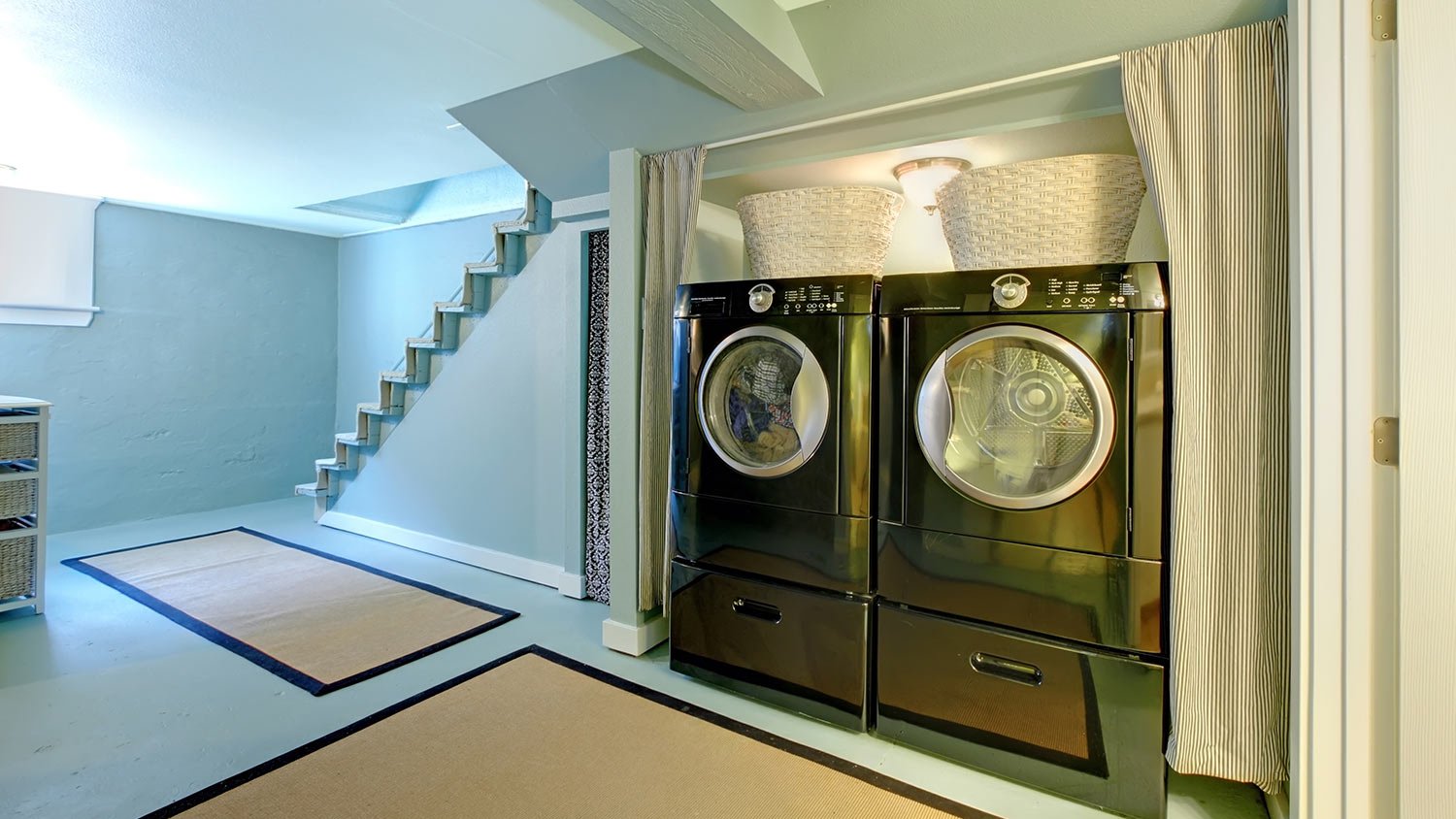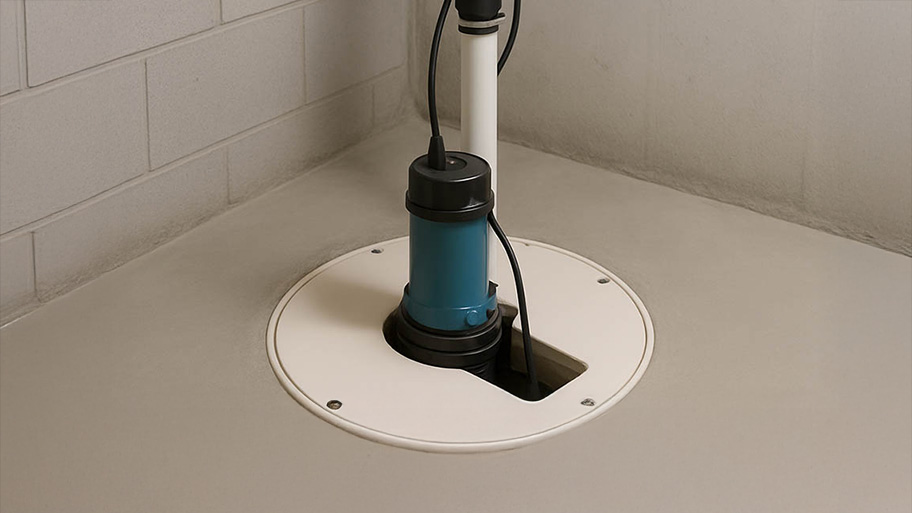
Crawl space repair costs can seem intimidating, but putting them off can lead to bigger issues. Learn about repair costs in this guide to set your budget.
To waterproof or not to waterproof, that is the question


Home Value Rating: 3/5
Basement waterproofing yields moderate returns that you can maximize with the help of a pro.
This home improvement project can yield a 30% ROI.
It can help you avoid water and mold damage and lower your energy bill.
Contact a pro to help you find the best waterproofing method for your home.
You’ve probably heard horror stories of flooded basements and the expensive repairs that came with them. But with costs averaging $5,100, is basement waterproofing worth it? Generally, you can expect an ROI of about 30% from a basement waterproofing job. A waterproofed basement adds value in the form of protection from foundation damage and mold growth. In this guide, we’ll discuss this home improvement project’s pros and cons and the factors that affect your ROI.
Before we explain if it’s worth it, you need to understand what exactly basement waterproofing is. Basement waterproofing prevents water from entering your home or removes it if it does get inside. Your basement waterproofing contractor uses various inside and outside methods to keep water at bay, though the most effective methods are the ones that solve your specific needs—which not every solution might do.
Basements can be waterproofed using a variety of methods and tools. Some methods are exterior, which are meant to prevent water from getting into your basement at all. Other methods are interior, which are meant to solve water issues after they’ve gotten into your basement. Here are some of the most common methods.
Waterproofing is crucial for basements to prevent water intrusion, mold growth, and structural damage. Interior waterproofing methods like sealants and vapor barriers help control moisture levels but don't address the root cause. Exterior waterproofing, such as waterproof coatings and French drainage systems, are often more effective in preventing water from entering the basement.
| Interior Basement Waterproofing Methods | Exterior Basement Waterproofing Methods |
|---|---|
| Baseboard channels | Excavation |
| Dehumidifiers | French drain |
| Epoxy injection | Gutter system |
| Foundation coating | Liquid membrane |
| Silicate concrete sealer | Sheet membrane |
| Subfloor drain tile system | Sodium bentonite application |
| Sump pump | Underground downspout |
| Vapor barrier | Yard grading |
| Waterproofing paint | |
| Weeping tile/Interior French drain |
Generally, you can expect an ROI of about 30% from a basement waterproofing job. This can be a great selling point when putting your home on the market since waterproofing offers many benefits, like preventing foundation damage and mold growth.

Basement waterproofing offers homeowners some notable advantages. But while they can be fairly beneficial, some flaws are worth considering. Below, we’ll discuss the pros and cons of basement waterproofing.
Here are some common pros of waterproofing your basement.
When making any home improvement, it’s a major bonus if it’s something that attracts buyers—and helps you recoup your money. Waterproofing a basement has a great potential ROI that makes it even more worthwhile.
You can turn your waterproofed basement into an extra bedroom, office, gym, or even a safe storage space for documents. So, when weighing if basement waterproofing is worth it or not, keep in mind that a waterproof space is potentially more usable space for you and your family.
Water can cause cracks in the foundation or walls. The cracks are often not noticeable at first, so you might not know what is happening until after damage has set in. However, with waterproofing, you can avoid issues by stopping water damage before they happen.
An overly humid basement can affect other rooms, making your HVAC system work harder. By waterproofing your basement, you could see lower heating and cooling costs.
Besides a wet basement dampening buyer interest, a leaky basement can become a breeding ground for mold.
Water in your dark basement provides the perfect environment for mold. According to the American Lung Association, mold spores can cause several kinds of respiratory infections, aggravate asthma, and cause itchy eyes and skin. Mold can also emit a funky smell you don’t want in your home.
If you live in an area with bad storms, waterproofing your basement will definitely provide you with a return on investment—even if just by helping to prevent flooding that could damage your foundation, destroy furniture and possessions, and much more. You’ll no longer have to worry about basement flooding or water seeping through when a big storm hits.
Now that you know the return on investment for basement waterproofing, it’s time to get started. If you’re not into DIYing this job, look into hiring a local basement waterproofing company and check this home improvement project off your list.
Here are some common cons of waterproofing your basement.
Basement waterproofing costs $5,100 on average. While these preventive measures can save you thousands on repair bills, the initial cost can be steep, depending on your budget. You can save on the up-front cost by installing interior waterproofing methods that are more wallet-friendly than their exterior counterparts.
Some internal waterproofing methods are DIY-friendly but temporary. Some external solutions require excavation, which isn’t something we recommend homeowners do themselves. So, if you’re interested in a more long-term solution like exterior waterproofing, you’ll have to contact a pro for the job.
Depending on your chosen method, it may need some periodic TLC to keep it functioning as expected. So, is waterproofing a basement worth it if it can potentially add more work to your plate? If maintenance is an issue for you, consider looking into waterproofing methods requiring little effort. But remember that while this can feel like an inconvenience, basement waterproofing is there to help prevent you from experiencing a bigger headache in the future.
Unfortunately, even after installing your waterproof method, it might not work because of poor installation or it didn’t solve the root issue. For example, if water flows to your home—common in negative sloped yards—waterproof paint isn’t an effective solution and may still let water into your basement. Before choosing a method, find out what issues you may be experiencing and what method is the most effective solution to combat it.
For the majority of homeowners, basement waterproofing is a must. Since it’s designed to prevent situations like damp basements and mold, it doesn’t hurt to take preventive measures so you don’t have to deal with these costly issues. If you stay in a rainy area, waterproofing your basement might be necessary.
Basement waterproofing costs anywhere from $2,500 to $8,200, with an average price of $5,100. The cost depends on a number of factors, such as the size of the basement, the waterproofing method, and if there is any pre-existing damage.
You’ll spend an average of $3,000 on interior waterproofing services, and exterior services will cost an average of $7,000. If you only need minor fixes, you could pay less. For instance, sealing foundation cracks could cost as little as $500.
Labor is also a big cost factor here. Basement waterproof contractors charge as much as $200 per hour. This is because many waterproofing methods require excavation.
It’s likely best to outsource this job to a professional. It’s complicated and labor-intensive work. A local waterproofing contractor will be able to come up with a comprehensive plan to seal off the basement and repair any underlying issues. Mistakes can be costly here, as waterproofing a basement often requires excavation as well as work on the home’s foundation. The process also typically mandates the installation of water management systems on the exterior of the home.
While a comprehensive waterproofing job is best left to the professionals, there are some smaller DIY-friendly projects that you can handle on your own. These include soil grading, removing water from the area, sealing windows, and installing a dehumidifier. If you decide to hold off on hiring a pro, inspect the foundation before starting any of the aforementioned tasks.
According to data from Angi, around 41% of homeowners are looking to waterproof their basements within 2 weeks, and about 17% need it done within 1 to 2 days, highlighting the urgency of this project for many homeowners. Another 35%, however, are still planning and budgeting.
Home is the most important place on earth, which is why Angi has helped more than 150 million homeowners transform their houses into homes they adore. To help homeowners maximize the value of their investments, we gather ROI data from reputable sources, including industry reports, real estate studies, and interviews with market experts. We calculate the average resale value for projects by multiplying the ROI against the project’s average cost according to our cost data, which is sourced from thousands of real Angi customers.
Want to help us improve our data? Send us a recent project quote or home appraisal value to [email protected]. Quotes and personal information will not be shared publicly.
From average costs to expert advice, get all the answers you need to get your job done.

Crawl space repair costs can seem intimidating, but putting them off can lead to bigger issues. Learn about repair costs in this guide to set your budget.

Discover how much sump pump installation costs, including average prices, key cost factors, and tips to save on your basement waterproofing project.

Need to fix basement water problems or safeguard your home from damage in the future? Use this basement waterproofing cost guide to budget appropriately.

Dealing with a damp crawl space? Use these eight simple tips to get rid of the moisture and water-related problems once and for all.

Unearth the root causes of water seepage in your basement floor. Explore effective solutions to keep your basement dry and your home protected.

Your sump pump is designed to remove water and prevent flooding. Find out which common causes may be responsible if your sump pump is constantly running.